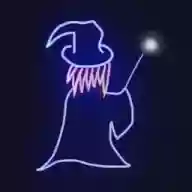Niigata’s folk songs, children’s songs, and nursery rhymes: the heart of our hometown passed down in song
Niigata Prefecture is known for hosting traditional Bon dances and festivals, as well as for its large area of rice cultivation and high yields.
We’ve selected many folk songs and children’s songs related to Niigata, including pieces themed around Sado Island.
Folk songs, which are often performed at festivals, convey a lively, festive atmosphere through their rhythmic sounds.
It’s also recommended to explore the background behind songs like “Sado Okesa,” which are beloved across Japan.
Be sure to listen to the folk and children’s songs that showcase the charm of each region of Niigata.
- A classic song that celebrates Niigata. The enduring spirit of our hometown passed down through song.
- Ranking of Popular Folk Songs
- Folk Songs, Children's Songs, and Nursery Rhymes of Aomori: Japanese Songs from Tsugaru and Hachinohe that Resonate with the Heart
- Folk songs, children's songs, and nursery rhymes of Nagasaki: the heart of the hometown passed down through song
- Folk songs, children's songs, and nursery rhymes of Toyama: the enduring heart of our hometown passed down through song
- [Japanese Folk and Regional Songs] A Collection of Beloved Masterpieces from Across Japan, Brimming with Local Pride
- [Folk Songs of Yamagata] The Heart of Our Hometown Passed Down in Song: Feelings Woven into Nostalgic Melodies
- Collection of winter nursery rhymes, folk songs, and children's songs. Includes fun winter hand-play songs too.
- [Folk Songs and Children's Songs of Akita] A curated selection of local masterpieces that evoke love for one’s hometown
- Folksongs, children's songs, and nursery rhymes of Fukushima: the heart of our hometown passed down in song
- [Folk and Children's Songs of Hokkaido] Songs of Hokkaido that continue to be loved across generations
- Beautiful Folk Songs Passed Down in Miyagi Prefecture: A Collection of Masterpieces that Play the Heart of the Hometown
- Folk songs, children's songs, and nursery rhymes of Iwate: the heart of the hometown passed down through song
Niigata’s folk songs, children’s songs, and nursery rhymes: The enduring heart of our hometown (21–30)
Oni Daiko of Sado

This is the Sado Onidaiko, said to have been brought to Sado about 500 years ago.
Accompanied by Noh dance, each area has its own distinctive drums and choreography, and it is said there are as many as 120 combinations across the island.
It is a sacred tradition dedicated at Shinto shrine festivals to ward off evil, pray for prosperous business, and ensure a bountiful harvest.
Osaka

It is the bon dance song “Ō-no-Saka” performed in Horinouchi Town, Kita-Uonuma District, Niigata Prefecture (now Uonuma City).
Because the lyrics include the phrase “Namu Seihō” and it is sung in a hymn-like chant, it is also called a “nenbutsu dance.” It has a melancholy tone and is danced with elegance.
Niigata’s folk songs, children’s songs, and nursery rhymes: The enduring heart of our hometown (31–40)
Echigo-MatsuzakaFutaba family, Itoko

Echigo Matsuzaka, a celebratory song passed down in Niigata Prefecture, originated in the Kambara region of Echigo.
It spread throughout Japan through itinerant entertainers such as the blind female performers known as goze, who earned money by singing and playing the shamisen, and the blind biwa priests called zato, who performed narrative songs accompanied by the biwa or shamisen.
Barrel beatingShinushizakiya Misao

“Tarutataki” of Niigata Jinku is a Bon dance song also known as the “Niigata Bon Uta.” In Niigata’s geisha districts, it is said that the geisha would beat large barrels as they sang.
Just imagining them striking multiple barrels while singing and dancing makes me excited—even though I wasn’t there in that era and don’t even know Niigata’s Bon dances firsthand.
Come, springSoma Gippo, Hirota Ryutaro

The children’s song “Haruyo Koi” (Come, Spring) was written by the poet Gofu Soma from Itoigawa City in Niigata Prefecture.
The composer was Ryutaro Hirota, known for songs such as “Koinobori” and “Sparrows’ School.” It is said that “Mii-chan,” who appears in the song, was modeled after Soma’s eldest daughter, Fumiko.
From this song, you can sense how people in a land of deep snows have been eagerly stretching their necks, waiting for spring to arrive.
Bridal DollKōji Fukuya

Hanayome Ningyo (Bride Doll) is a children’s/lyric song with lyrics by Koji Fukuya from Shibata City, Niigata Prefecture, and music by composer and violinist Haseo Sugiyama.
The lyrics came first, originating from a poem and accompanying illustration that were hastily created for another project.
Ogi Okesa

In “Ogi O-kesa,” the word “Ogi” is a place name on Sado Island, a location that prospered as a relay port for trade on the Sea of Japan.
From the port, the Kyushu song “Hanya-bushi” was brought in, transformed into “Ogi Hanya,” and further evolved into what remains today as “Ogi O-kesa.” The tempo is relatively brisk, and its simplicity makes it a charming song.





